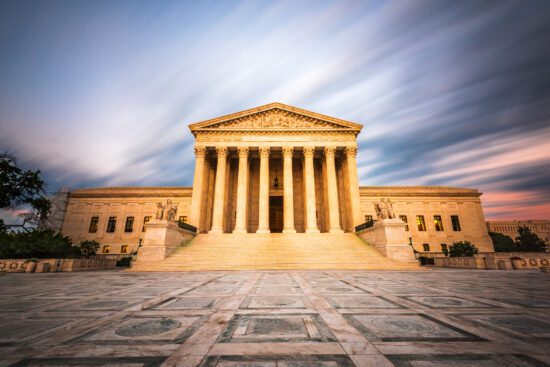We live in an age experiencing the disastrous effects of the sexual revolution. Confusion over basic concepts such as man, woman, and marriage are but the latest divergence between a culture committed to radical individual autonomy and a church committed to Scripture’s teaching. Local congregations daily face questions of gender dysphoria, same-sex unions, and on basic concepts of what it means to be a man or woman. The ERLC seeks to come alongside and assist pastors and ministry leaders to answer those questions in light of Scripture’s clear teachings with resources like these and future projects.
Below, we have given a basic theological framework from God’s Word for approaching questions of gender and biological sex. Additionally, there are some practical guidelines for churches to consider in updating their bylaws to ensure that they are afforded as much protection as possible under the law. It is our hope that at both the theological and practical level this resource will be helpful to you as you serve your congregation.
A theological framework of sex and gender
God created you. At its most basic level, the fact that we are created by God means that we are limited by the design that God has given us (Gen. 1). Recognizing that we are created by God means accepting that we do not have absolute control over our bodies and how they are to be used (Is. 29:16). They are to be used in accordance with God’s design and purpose. When we attempt to usurp God’s design, we repeat the sin of Adam and Eve who desired to be more than just “like God” but rather to become God (Gen. 3:5). Remembering that we are created and therefore finite grounds our theology of the body and gender (1 Pet. 1:24).
God created you with a body. Contrary to popular understanding, our bodies are inseparable from who we are. We are not souls trapped in a body (1 Cor. 6:12-20). The Christian church has long understood and upheld the worth of the body, looking at both the creation account of Genesis where God declares the world good and the Incarnation of Christ where a perfect and holy God took on flesh and blood (John 1). As Christians, we must not fall for the lie of culture that our bodies are to be changed to meet our self-perception (2 Cor. 10:5).
God created humans male and female. In the opening pages of Genesis, the author tells us that humanity was created in God’s image and created male and female (Gen. 1:26-27). We often focus on the former, but the latter declaration is just as important. The author’s description is an acknowledgement of distinction and difference between the two. Men are not women, and women are not men. Yet, we should not overplay these differences in an unbiblical way because, as the next chapter reminds us, there is nothing more like man than woman (Gen. 2). Still, those differences are there and part of God’s design. Neither is more important or carries more of the image of God, and both are necessary to fulfill the command given to steward creation and multiply. As Christians, we recognize the ways that God has designed both men and women as distinct, yet equal expressions of humanity.
God created male and female to complement one another. The opening pages of Scripture remind us that we are made in God’s image, and that men and women are to complement one another (Gen. 1:26-27). At its most basic level, this complementarity is revealed in biology: both man and woman are needed for sexual reproduction. It also reveals itself in a range of social and relational aspects (Eph. 5:21-33). At its core, complementarity glorifies God and is a reminder that we are created, finite beings who are unable to live in existence without others (Gen. 2:18). Though our current context seeks to blur the distinctions between men and women to the point that they are interchangeable, Christians recognize that each gender has something that is distinct and special. Neither can exist without the other (1 Cor. 11:11-12).
The Fall affects how we perceive our bodies. The effects of sin have broken every part of creation. This includes our own self-perception and understanding (1 Pet. 1:14). The presence of disorders such as gender dysphoria (when a person’s perception of a mismatch between their gender and their body causes distress) is one example of the way sin has warped our understanding. Christians must recognize that sin is able to powerfully deceive, even to the point of thinking that bodily mutilation is the way toward happiness (Eph. 4:22). In contrast, Christians must offer a word of hope and a reminder that our bodies are good gifts given to us by God, not obstacles to be overcome.
God meets those broken by the sexual revolution with compassion and grace. We are repeatedly reminded that God has compassion for those who have been broken by sin. The pages of Scripture are filled with the story of a God who cares for those who have been deceived, abused, and mistreated by society and culture (Jonn 4; John 11). Christians must recognize that the sexual revolution has been built upon empty promises. Many people have been (and will be) left hurt, confused, and at the end of their rope, looking for hope and answers: those who were deceived to think that casual sex was meaningless, our bodies could be changed as we saw fit, and that their gender was unimportant to who they were. The response of the church is to be the same as the response of Christ: “a bruised reed he will not break” (Matt. 12:20). We offer the same grace and compassion given to us and seek to restore those who have been broken by the lies of sin.
COMING SOON: Downloadable, printable version of “A Theological Framework of Sex and Gender” for use in your church or ministry.
The importance of bylaws
The ERLC worked with Alliance Defending Freedom to create a resource guide for churches to update their bylaws in light of challenges related to sexual orientation and gender identity lawsuits. Below are the five areas where churches can provide clear frameworks outlining their faith and religious convictions to protect themselves so that they can continue in ministry that is faithful to God’s Word and brings about gospel transformation. You can read the entire guide here.
Statement of Faith (p.5): The Statement of Faith should serve as an encapsulation of the foundational theology of the church or organization. In addition to the usual topic of salvation, doctrine of sin, or church polity, a statement of faith should include the position of the church related to matters of gender, sexuality, and marriage. Because these issues now regularly confront churches, it is imperative that churches and religious organizations clearly put forth their belief in marriage’s foundational role in society, that it is rightly restricted only to one man and one woman, and that gender identity flows from and is inextricably connected to biological sex.
Religious Employment Criteria (p. 11): Churches and religious organizations should strongly consider creating a religious employment requirement for all employees so as to avail themselves of the full weight of First Amendment jurisprudence. Under the “ministerial exception” churches and religious institutions are able to take religious belief into consideration when hiring and firing without penalty under non-discrimination laws. By clearly defining roles according to their contribution to the organization’s religious mission, and having employees sign the statement of faith, they can protect themselves from legal challenges.
Facility Use Policy (p. 14): A fear of many churches is that they may be required to grant use of their facilities to couples who may wish to use them for a wedding ceremony the church would not sanction or other events. In general, churches are free to grant access to their facilities as they wish because they are private property. However, they can further protect themselves by creating a clearly defined facility use policy that identifies the religious nature of the building and restricts use of the facility to those who act in accordance to your beliefs.
Formal Membership Policy (p. 16): While many churches have an informal process of affirming or recognizing church membership, their legal protections are increased by formalizing the process. In ideal circumstances, their written process should cover the procedures for becoming a member, procedures for church discipline, and procedures for disfellowshipping or excommunicating a member. Each of these helps to provide a legal framework protecting the church and providing clarity to members of the expectations of membership and the processes that can be expected in times of discipline. This can be especially helpful if a member objects to the church’s implementation of disciplinary measures.
Marriage Policy (p.18): In addition to the statement of faith which clearly outlines the church’s theology of marriage, churches should create a marriage policy which outlines the parameters under which pastors, ministers, or staff will solemnize a marriage. This marriage policy may include not only a statement on belief of marriage as between a biological man and woman, but also another statement on the use of the facility for marriage ceremonies. Additionally, churches may consider adding a provision that only members will be able to use the facilities to provide a further layer of protection if the church has a requirement that members affirm the church’s statement of faith.
COMING SOON: Downloadable, printable version of “The Importance of Bylaws” for use in your church or ministry.
Resources
Articles
- Katie McCoy: What is a woman?
- Greg Allison: What is a man?
- Rebecca McLaughlin (for teens): Who cares if you’re a boy or a girl? Helping teens think through hard questions about Christianity
- Adam Groza and Ben Arbour: 3 fatal flaws in the “gender as social construct” position
- ERLC Sexual Ethics Page: erlc.com/sexualethics
Books
- Greg Alison, Embodied: Living as Whole People in a Fractured World
- Sam Allberry, Is God Anti-Gay?
- Ryan Anderson, When Harry Became Sally
- Rosaria Butterfield, Secret Thoughts of an Unlikely Convert
- Jared Kennedy, Teaching Your Children About Gender
- Hunter Leavine & Brian Seagraves, Gender: A Conversation Guide for Parents and Pastors
- Carl Trueman, The Rise and Triumph of the Modern Self
- Jackie Hill Perry, Gay Girl, Good God
- Andrew Walker, God and the Transgender Debate
- Christopher Yuan, Holy Sexuality
Podcasts and Videos
- Podcast: “Is it okay to be gay? A candid conversation on Christians and same-sex attraction” with Christopher Yuan, Sam Allberry, Rosaria Butterfield, and Jackie Hill Perry
- Keynote: Sam Allberry’s on “Church as the Family of God: Singleness, Same-sex Attranction, and the Hope of Hospitality”
- Video: Andrew Walker on “The Family & the Gender Revolution”
- Video: Denny Burk’s on “A Gospel-Centered Assessment of Gender Identity, Transgender, and Polygamy”
- Video: ERLC Webinar “Discipling Your Church for a World in Sexual Crisis”









